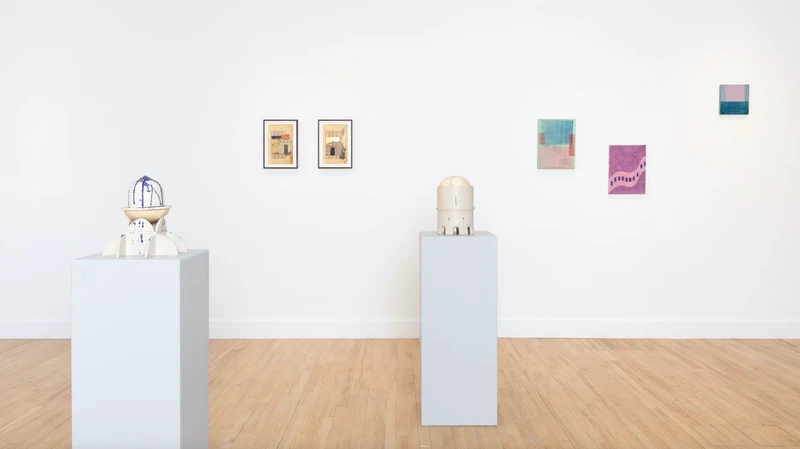In House: Bamidele Awoyemi and Adia Wahid
10 Nov 2023-14 Jan 2024


In House: Bamidele Awoyemi and Adia Wahid is the first in a new series of duo exhibitions organised by and for Studio Voltaire’s community of studio artists and cultural tenants. The programme seeks to create a dialogue between two artists, finding points of convergence and collaboration between their practices.
In this exhibition, Awoyemi and Wahid explore the use of pattern in each of their practices. A stroke of a line. An intersection of two paths. A collection or rhythm of different markers to convey common thoughts, beliefs, knowledge and rituals. Our everyday life is littered with symbols, characters and motifs that work together to communicate and speak to us in different ways - from algorithms and languages, to visual systems in our wayfinding and even clothing - speaking to our own inherited influences and cultures.
Considering pattern as a means of creating dialogue by responding, reflecting and overlapping to create new different intensities and repeated forms, the artists collaboratively consider the cartographic and ritualistic nature of patterns, and their ability to replace words and imbue meanings visually.
Bamidele Awoyemi has an ambition to engage with stories. Those which make our spaces. Those inscribed within our objects. Those which speak to our habits, rituals, and everyday experiences. His Yoruba descent, while being born and based in South London, drives his interests—drawn to how tools and techniques of storytelling can provoke richer insights and infer new meaning.
Through his passion for engaging with the overlaps in different cultures and values, Bamidele has been fortunate to collaborate with different groups, specialists, and communities in the projects he does; playfully shifting between mediums and disciplines to interrogate, speculate, provoke and subvert.
Adia Wahid (b. 1971 Karachi) lives and works in London. Her drawings and paintings can be described as diagrams doubled over other diagrams, in search of yet another level of diagram that never quite knows which time it is in. Time and cultural syntax are spliced together, but in ways that leave gaps or striations. The brain is strange in the way it is able to process and create reality. Something is not there and then it is: a drawing might mediate such a passage between absence and presence. This corresponds to the process of recording and erasing.